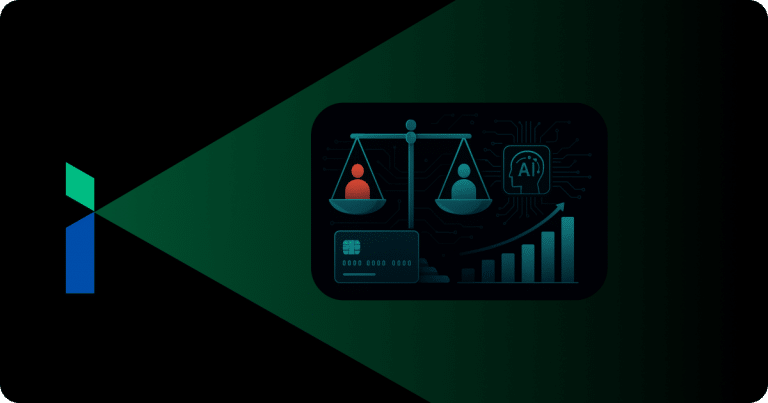The records of these courts are often spread across multiple portals and have no unique identifiers, so there is no easy way to search for the records.
It would be nearly impossible to manually browse through the numerous cases at various courts, year by year if an entity or a person needed the number and details of cases filed by or against other entities or individuals.
Because of the incredible diversity of our country’s languages and limited English vocation in many areas, even if the platform is accessed manually, spelling and translation errors may make a simple, basic match impossible.
Here is a way to automate the generation of litigation reports!
In light of the above limitations, Perfios has built the Litigation BI tool to gather, aggregate, and consolidate data about all litigation filed across India, and have built a search feature that allows users to search for and extract cases filed by or against any different individual or entity in India.
Litigation BI aggregates data from all courts into a single database assigns unique identifiers to every case record, enabling users to browse through the entire gamut of cases and pinpoint cases of relevance with an intuitive search mechanism, allowing users to efficiently execute comprehensive Litigation Diligence.
Ways in which Litigation BI can be helpful
Easy-to-use Filters
Due to India’s large population and size, there are many individuals with the same name, making it difficult to identify if a case belongs to the individual on whom diligence is being performed, or another individual with the same name.
With more than 20 search filters, it helps users narrow down search results and pinpoints cases of critical importance or relevance. The basic filters include status (pending or disposed), relation (petitioner or respondent), states across India, date type (date of filing or date of action), court type (district courts, high courts, supreme court, tribunals, etc.), and risk (high or medium).
There are advanced filters to further narrow down the search and arrive at cases of relevance such as district, state, advocate, judge, case type, etc.
Furthermore, differentiation is provided based on the type of court where the cases were filed, such as district courts, tribunals, high courts, etc. You can further deep dive into the cases filed at different courts within a given year.
Detailed record of all cases
Each case is assigned and identified by a unique identifier – the Case Identification Number (CINO). While most district courts assign CINOs, high courts and the Supreme Court don’t necessarily assign any unique identifiers to every case. To avoid unnecessary data duplication and inconvenience to the client, Litigation BI will automatically assign a unique identifier or CINO to such cases.
All details relating to a case and available in the public domain are associated with its CINO. Users can find all this information, including the case number, status of the case, a history of hearings, the Acts and Sections under which the case was filed and order copies all at the click of a button. Our intelligent systems also analyse various parameters to identify the risk associated with a particular case. Detailed information on the FIR if one has been filed in conjunction with the case is also provided. It is not uncommon for district court cases to get appealed to the high court. We identify and link these cases together for ease of reference.
Risk Assessment
A research-driven approach is adopted to assign the severity of the risk to any case. There is a predetermined set of general rules that broadly classify cases into High or Medium risk, by analyzing the nature of the case, the authority that has filed the case, the forum in which the case is filed and more.
Besides the set of general rules, we also consider the ‘Act’ and ‘Section’ under which a case is filed and review applicable laws carefully to determine whether a particular section poses a ‘High Risk’ or not.
The position of the searched entity is an important determinant in assigning risk associated with a particular case, for example, a cheque bounce case under Section 138 of the Negotiable Instruments Act may be high risk for the respondents, but medium risk for the Petitioners.
Perfios Exclusive! Fuzzy Retrieval
In towns and villages, court personnel with limited English proficiency translate case information from Hindi or regional languages into English while uploading to the portal, resulting in umpteen variations and misspellings.
The Fuzzy Search function allows users to search for common variations in the spelling of an entity or an individual, without needing to add various input combinations. It does this by leveraging Perfios’ proprietary name matching solutions to identify and account for spelling mistakes, phonetically similar words etc., ensuring that cases do not get missed out.
In fact, our cabinet is decorated with the trophy of the Amazon AI award 2019 for Fintech, specifically for our name-matching algorithm. Such has been the impact!
Hence, with Fuzziness on, the number of cases filed by or against an entity will increase considerably as it extracts cases pertaining to a firm or entity from the remotest corners of the country.
Use cases of Litigation BI
Credit Underwriting by Banks
As a bank or financial institution offering loans to an entity or individual, it is imperative to ensure that the entity or individual to whom the loan is being offered does not have any court cases filed by or against it that could negatively affect the borrower’s creditworthiness or affect its ability to repay the loan.
Banks and financial institutions would be interested in finding litigation cases filed by or against an entity or an individual. However, there would be a large number of cases which would make it difficult to evaluate and examine each case to determine the impact on the firm or individual’s ability to repay.
By bifurcating cases into high risk and medium risk, the firm is able to quickly review cases to identify those of critical importance and relevance.
Case Tracking by Large Banks, Corporates and Insurance firms
The vast majority of insurance companies and large banks, by the nature of their business, have a humongous caseload. A single insurance company had almost 283,000+ cases, for example.
Due to its inherent limitations and limited capacity, Litigation Management software for companies like these cannot keep an updated diary of all such cases. Despite keeping a diary, keeping track of such a large number of cases and staying on top of hearing dates is extremely difficult and cumbersome.
Traditionally, each case would have to be reviewed manually, compartmentalized and segmented based on the hearing dates, which is an extremely tedious task and sometimes not possible.
Litigation BI tracks all of the cases daily and lets insurance companies, accounting firms or law firms know which cases have hearings coming up this week, this month or next month. This helps the firm avoid missing any hearings and incurring huge penalties.
Research and Due diligence by Law firms
In most cases, the transactional or real estate teams of law firms require litigation reports to evaluate the cases pending against their client or any entity or individual the client is doing business with.
Every time there is any form of a corporate transaction between parties, whether in the nature of a merger, takeover, contract or some other transaction, the law firms or the third party overseeing the deal have to conduct due diligence on the interested, related parties. We enable effective Litigation Diligence through customizable PDF reports, downloadable in minutes, tailored to suit the unique specific requirements of the customer conducting the diligence.
Benefits of Litigation BI
- Widest Coverage – collecting data from 3500+ courts and making it accessible through a single dashboard for simplified screening and alert monitoring.
- Highest Data update frequency– Industry-leading data update frequency, with data updated within days of updates being made at the source.
- Intuitive Search functions – Easy access to various types of search functions using Name, DIN, CINO, Case Number, Address, Vehicle Number and FIR Number
- Intelligent AI-Powered Insights – Our intelligent dashboard and comprehensive coverage empower our clients to analyze litigation risks and derive incisive, actionable insights that inform their decision making.
- Award-Winning Solutions– Our name matching algorithm won the Amazon Award for AI in FinTech in 2019, ensuring we are able to identify and provide the highest number of cases while maintaining a high level of accuracy
- Most Mature Database – The most comprehensive and enriched database, covering all digitised data available at the source, with data available as far back as 1950.
- Customizable Reports – We allow customers to generate PDF reports of all litigation filed by or against an entity or individual at the click of a button, customizable to include only the data that is relevant to them or their clients
Conclusion
With the KScan Litigation BI tool, the process of identifying litigation cases filed against or by a company is streamlined and seamless. Litigation BI tool makes sure the litigation history of a company is carefully examined and analyzed in order to make important investment decisions or other important decisions that impact the company.
It can replace the tedious process of sifting through mountains of data and calculating complex risk levels based on an examination of each case by automatically extracting the specifics of each case and analyzing them according to pertinent models that can outperform human cognitive skills.














